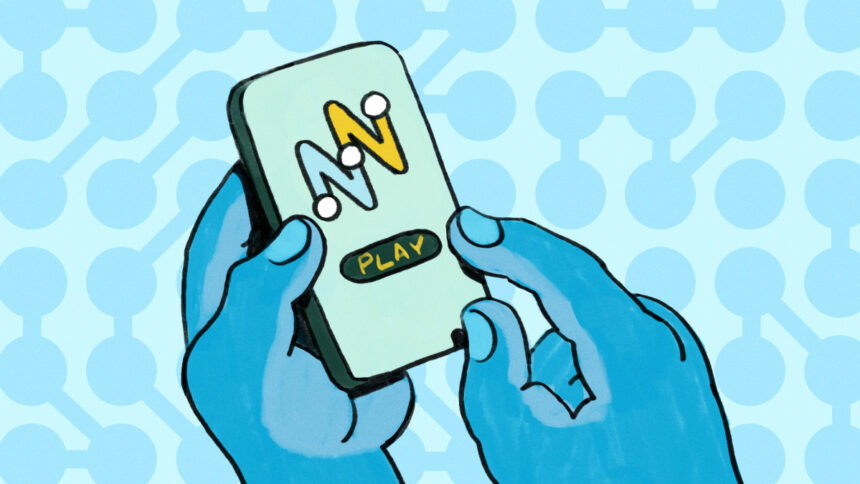Strands Puzzle Solutions for December 30, 2024: Embrace Classical Music
If you’re seeking hints and solutions for the Strands puzzle dated December 30, 2024, this is the place to be! Discover essential tips and clues, culminating in the complete solutions centered around the theme, “Keep it classical.”
For quick access to our daily Strands hints, consider bookmarking this link. You’ll also find previous hints available on that page, allowing you to review any puzzles you may have missed.
Below, there’s a selection of subtle hints related to today’s Strands answers. Keep scrolling for more detailed guidance and the full answers. Take your time and pick out only the clues you need!

Clue for the Spangram in Today’s Strands
A term associated with the arrangement of music for an orchestra, for instance.
Clue for the Theme Words in Today’s Strands
Different kinds of classical compositions, each serving unique roles and definitions.
WARNING: Spoilers Ahead for Today’s Strands Puzzle!
The answers for today’s Strands puzzle will be disclosed shortly.
What is the Spangram in Today’s Strands?
The spangram for today is COMPOSITION.
What are the Theme Words in Today’s Strands?
The theme words are: SYMPHONY, PRELUDE, SONATA, OVERTURE, and CONCERTO.
Here’s how the completed board appears:

Solving Today’s Strands
The assumption is that today’s puzzle revolves around classical music, possibly featuring composers. The word COMPOSER appears centrally in the puzzle, although it doesn’t completely fit. It may indeed connect to another term to create the spangram.
No clues to composers are evident, but the term CONCERTO appears along the bottom row—an encouraging find! 
This leads to considering COMPOSITION instead of COMPOSER.  Correct!
Correct!
OVERTURE can be inserted into the space to the left created by the spangram. 
SONATA can comfortably fit into the upper right section. 
SYMPHONY is located in the upper left area. 
Finally, PRELUDE fits perfectly. 
Strands #302 “Keep it classical”
How to Play Strands
The Strands game is available on the New York Times website and within the NYT Games application.
Upon beginning a new game, players will see a grid filled with letters, accompanied by a thematic clue. This clue typically takes the form of a phrase, such as “Better with age.” Players are tasked with uncovering hidden words within the grid that align with the puzzle’s theme.
A Blend of Crossword and Word Search
The pivotal word to discover is the “spangram,” which more directly articulates the puzzle’s theme. (For instance, the spangram for the “Better with age” puzzle is FERMENTED, referring to items that improve over time.) The spangram spans the entire board, either horizontally or vertically. Identifying the spangram often facilitates easier completion of the remaining puzzle.
Within Strands, words may be arranged in any direction (vertical, horizontal, or diagonal), with each letter used precisely once. Only one solution exists for each puzzle. When a word is correctly discovered (examples include KOMBUCHA, MISO, or KIMCHI), it will be highlighted in blue.
For those facing challenges in solving the puzzle, submitting any non-theme words that meet the minimum letter requirement (four letters or more) can earn a clue. Submitting three non-theme terms activates the “Hint” button; clicking it reveals the letters of one theme word. However, players must still connect these highlighted letters correctly to form the term. Subsequent hints on the board will disclose letter order if they follow the first hint’s usage.
Winning Strands
Unlike games such as Connections or Wordle, failure is not an outcome in Strands. As guesses are submitted, they will yield either a correct identification, a credit towards a hint, or an error indicated by shaking text, signaling an invalid or short entry. There is no limit on guesses or time constraints.
The game is won upon successfully utilizing all letters on the board, including identifying both the spangram and all theme words. Similar to other NYT games, once completed, players see a shareable card depicting their performance: blue dots  represent theme words found, the yellow dot
represent theme words found, the yellow dot  signifies the moment the spangram was discovered, and a lightbulb
signifies the moment the spangram was discovered, and a lightbulb  denotes words hinted at.
denotes words hinted at.












